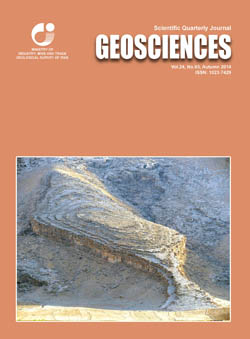Document Type : Original Research Paper
Authors
1 Ph.D. Student, Faculty of Natural Resource and Geosciences, University of Shahr e Kord, Shahr e Kord, Iran
2 Professor, Department of Geology, Faculty of Sciences, University of Isfahan, Isfahan, Iran
3 Associate Professor, Department of Geology, Faculty of Sciences, University of Isfahan, Isfahan, Iran
Abstract
Kavir bentonite in the northeast of Isfahan province is a part of the Khur bentonite horizon and lies in the Central Iranian structural zone. This deposits formed by the alteration of Eocene andesite-basalts. Based on the field observation several active faults are responsible in transporting siliceous fluids to the surface and their precipitation as geode, jasperoid and silicic veins. Microscopic observation indicates that these fluids outward alternatively in an alkaline aqueous basin. Chemical compositions of both siliceous and bentonitic samples as well as host volcanic rock show the same trend in trace elements and support the role of this hydrothermal fluid in bentonite formation. Depletion on LILE elements and Cs Positive anomalies is observed in siliceous and bentonitic samples. Oxygen and deuterium stable isotope study document that bentonites formed in temperature of about 83ْc and hydrothermal fluids are essentially derived from a meteoric water origin.
Keywords

